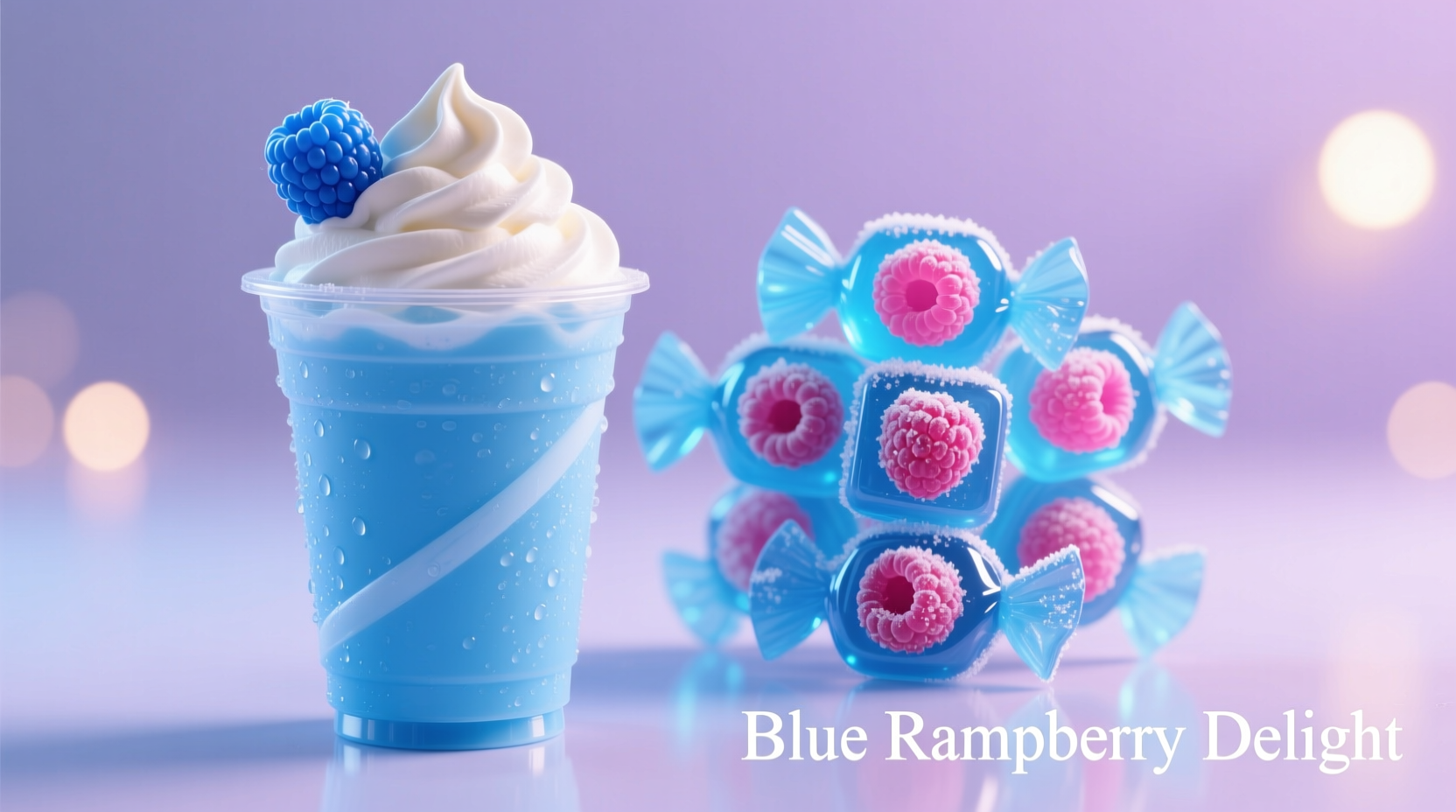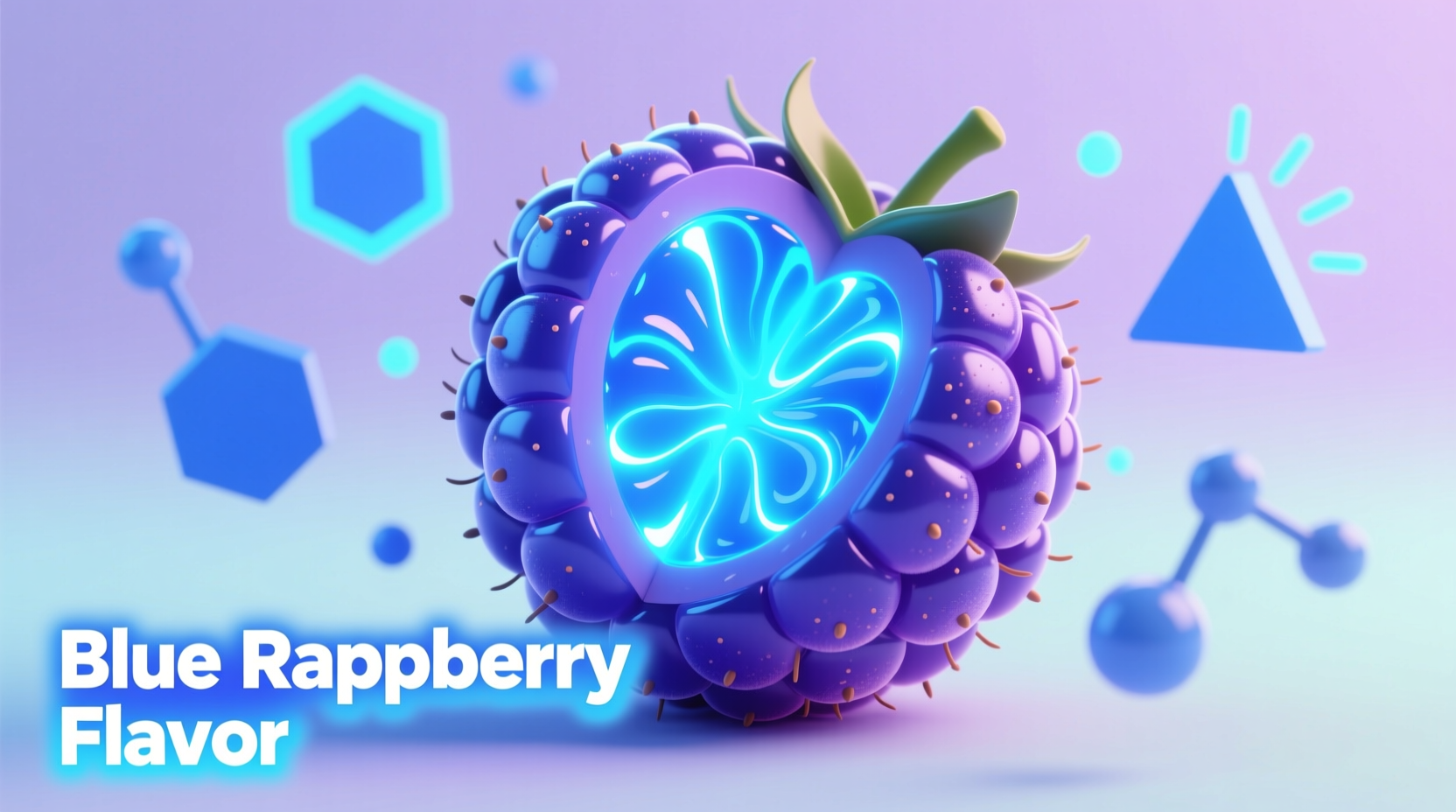Ever wondered why your favorite slushie or gummy candy boasts a vibrant blue hue while claiming to taste like raspberry? You're not alone. Millions search for what is blue raspberry flavor each year, seeking clarity about this ubiquitous but mysterious taste experience. Let's unravel the science, history, and practical applications of this artificially crafted flavor sensation.
The Surprising Reality Behind Blue Raspberry
Despite its name, blue raspberry flavor doesn't come from blue raspberries—a fruit that doesn't exist in nature. Real raspberries range from red to black, but never blue. Food scientists created this distinctive flavor in the 1970s as a strategic move to stand out in the crowded beverage market. When competing with cherry (red) and strawberry (pink) flavors, manufacturers needed a visually distinct option that could claim raspberry's popularity while occupying its own color space.
| Characteristic | Blue Raspberry Flavor | Natural Raspberry |
|---|---|---|
| Color Source | FD&C Blue No. 1 dye | Natural anthocyanins |
| Primary Flavor Compounds | Raspberry ketone + esters | Natural volatile compounds |
| Sweetness Level | Higher (30-40% more sugar) | Naturally variable |
| Common Applications | Slushies, candy, sports drinks | Jams, desserts, fresh consumption |
How Blue Raspberry Flavor Came to Dominate Treats
The development of blue raspberry flavor represents a fascinating intersection of food science and marketing strategy. According to historical records from the Institute of Food Technologists, flavor manufacturers in the 1970s faced a challenge: how to create distinct product identities in the growing soft drink market. With cherry claiming red and strawberry taking pink, raspberry needed its own visual identity.
Food chemists solved this by combining raspberry flavor compounds—primarily raspberry ketone and various esters—with brilliant blue dye. This created a flavor that tasted somewhat like raspberry but occupied a completely different visual space. The bold blue color proved particularly appealing to children, making it ideal for candies, frozen treats, and children's medications.
The Science Behind the Signature Taste
Blue raspberry flavor relies on specific chemical compounds to create its distinctive profile. While natural raspberries contain over 200 volatile compounds contributing to their aroma and taste, blue raspberry flavor typically uses just 3-5 key components:
- Raspberry ketone (4-(4-hydroxyphenyl)butan-2-one): Provides the characteristic raspberry aroma
- Ethyl methylphenylglycidate: Adds sweet, fruity notes
- Methyl anthranilate: Contributes grape-like undertones
- FD&C Blue No. 1 (Brilliant Blue FCF): Creates the signature color
- Citric acid: Provides the tartness that balances the sweetness
This simplified chemical profile creates a more intense, consistent flavor than natural raspberries, which vary by season and growing conditions. The result is a bold, sweet-tart taste that remains uniform across products and batches.

Where You'll Find Blue Raspberry Flavor
Blue raspberry flavor has carved out specific niches where its vibrant color and consistent taste provide advantages over natural alternatives:
- Frozen treats: Snow cones, slushies, and popsicles where the blue color prevents confusion with red cherry
- Candy products: Gummies, lollipops, and chewy candies targeting children
- Sports beverages: Electrolyte drinks where color coding helps with flavor identification
- Children's medications: Liquid medicines where palatability encourages compliance
- Party foods: Punches, gelatin desserts, and novelty foods for visual appeal
Notably, blue raspberry flavor rarely appears in adult-oriented products or culinary applications where authenticity matters. You won't find it in fine dining establishments or artisanal preserves—its artificial nature makes it unsuitable for contexts demanding genuine fruit flavors.
Natural vs. Artificial: What's Really in Your Treat?
When examining blue raspberry flavor ingredients on product labels, you'll typically see one of two formulations:
Traditional Artificial Version
- High fructose corn syrup or sugar
- Water
- FD&C Blue No. 1
- Artificial flavor
- Citric acid
- Sodium benzoate (preservative)
"Natural" Marketing Version
- Corn syrup
- Blueberry and raspberry juice concentrates (for color)
- Natural flavors
- Citric acid
- Traces of other fruit juices
Even products labeled "natural blue raspberry" typically use blueberry juice for color rather than achieving true blue raspberry characteristics. The FDA permits this labeling as long as no artificial colors are used, though the flavor profile remains engineered to match consumer expectations of blue raspberry.
Safety and Regulation of Blue Raspberry Ingredients
All components in blue raspberry flavor are approved by food safety authorities worldwide. According to the U.S. Food and Drug Administration, FD&C Blue No. 1 has been extensively tested and approved for consumption since 1982. Similarly, the flavor compounds used have GRAS (Generally Recognized As Safe) status.
While some consumers express concerns about artificial colors, regulatory bodies maintain that these ingredients are safe at current consumption levels. The European Food Safety Authority recently reaffirmed the safety of Brilliant Blue FCF (E133) in 2022 after a comprehensive review of scientific literature.
Practical Tips for Blue Raspberry Consumers
Understanding what makes blue raspberry blue can help you make informed choices:
- Check ingredient labels for "artificial flavors" versus "natural flavors"
- Products with "blue 1" or "brilliant blue" contain the traditional artificial coloring
- "Blueberry juice concentrate" often substitutes for artificial blue dye in "natural" versions
- Higher sugar content typically accompanies blue raspberry flavors compared to natural fruit options
- For authentic raspberry taste, seek products labeled specifically with "raspberry" without blue coloring
When shopping for blue raspberry flavor products, remember that the vibrant color serves primarily as marketing—not an indicator of fruit content. The distinctive taste you associate with blue raspberry is carefully engineered to create a consistent, appealing experience that stands out on store shelves.
Why Blue Raspberry Endures in Popular Culture
Despite being entirely artificial, blue raspberry flavor has maintained popularity for over 50 years. Market research from Mintel shows it remains among the top 5 preferred artificial flavors for children aged 6-12. Its success demonstrates how engineered flavors can create powerful sensory associations that transcend their artificial origins.
The next time you enjoy a blue raspberry snow cone or candy, appreciate the clever food science and marketing strategy behind this enduring flavor phenomenon—one that continues to delight taste buds while defying botanical reality.











 浙公网安备
33010002000092号
浙公网安备
33010002000092号 浙B2-20120091-4
浙B2-20120091-4